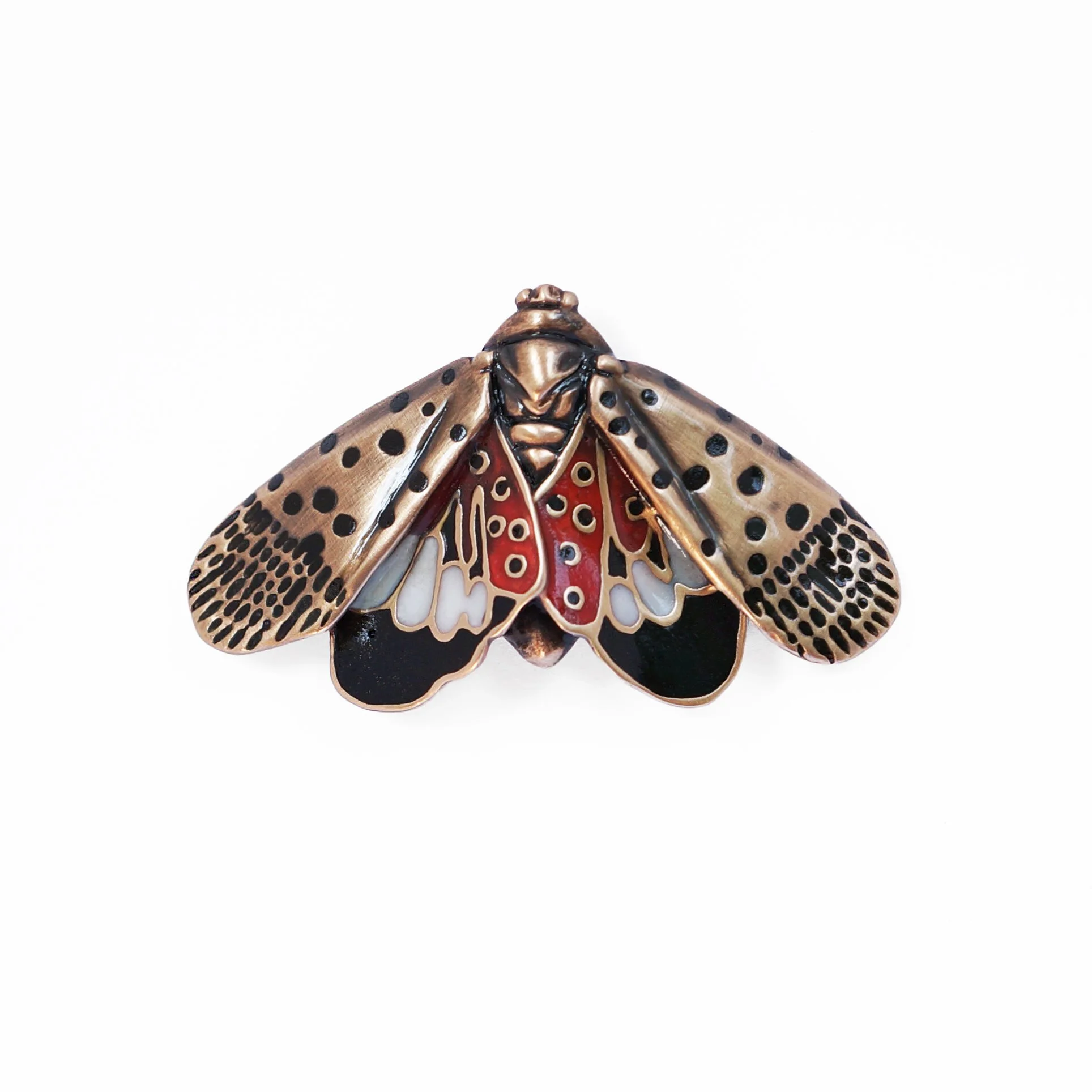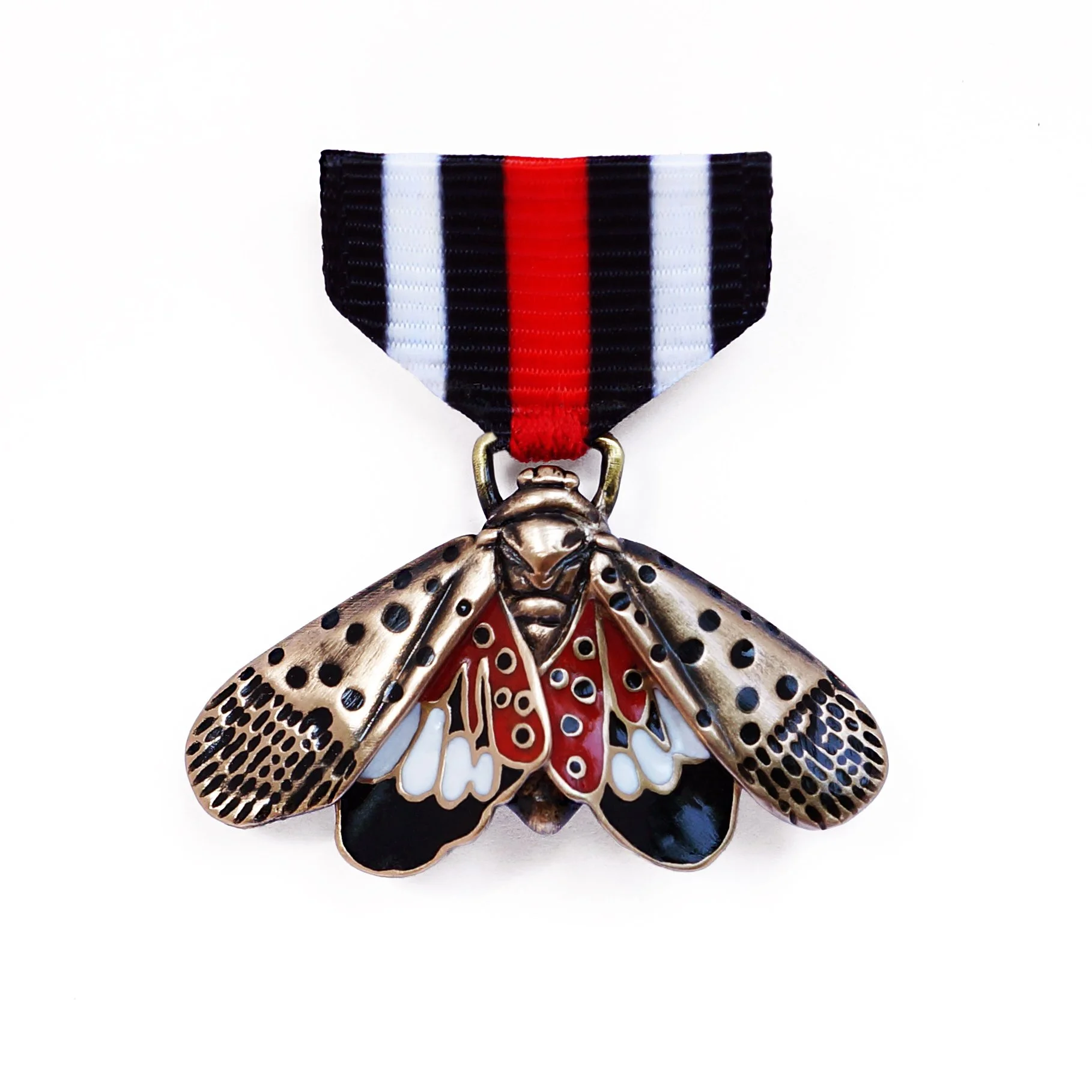Spotted Lanternfly Pin
Spotted Lanternfly Pin
The Spotted Lanternfly! By now you may have seen a few or a few hundred of these invasive insects. You may have even killed a few hundred by now, and for that we salute you! Wear this badge of honor to show you've done your environmental duty to help keep the population down.
As an artist I’ve been known to make jewelry inspired by and using insects, showcasing their beautiful and intricate details. Though the Spotted Lanternfly is beautiful, its beauty belies its destruction. The goal of this jewelry piece in not to glorify this insect, it is to spread awareness of the threat this insect poses to our agricultural system and our ability to sustainably grow food.
Spotted Lanternfly feed using piercing-sucking mouthparts to suck up plant sap. That alone can cause harm to trees and plants, but it gets worse. The lanternfly also exudes excess sugars called honeydew. While it sounds sweet, honeydew will get all over everything (the leaves, fruits, vehicles, decking, and even your pets) and fosters the growth of fungi called sooty mold. This attracts other nuisance insects and stresses the tree, leaving it vulnerable to other diseases and pests, and disrupts photosynthesis, stunting the growth and overall health of the tree. In cases where the host plant provides an economically important commodity, like apple trees or grape vines, the mold also affects the look, taste, and smell of the fruit. Beyond the potential destruction that these pests could bring to the apple and wine industries, spotted lanternfly poses an ecological threat too. The insect causes harm to native trees and forests, potentially destroying habitat for countless species. Bats that roost in trees for part of the year may find less available habitat. The same goes for birds, mammals, and reptiles that rely on woody vegetation for habitat and food.
Spotted Lanternfly are not native to North America and they are able to invade quickly and successfully because they have no naturalized predators. Humans are typically the reason invasives spread to new locations. In the case of Spotted Lanternfly, we are literally driving the problem by unknowingly transporting the insects and egg masses across state borders on our vehicles. Although it’s unlikely we’ll rid the country of these pests completely now that they are established. As the ones who inadvertently brought the bugs here, we have a responsibility to do our best to slow the spread and raise awareness, in order to protect our ecosystem from further harm.
So do your environmental duty. See a Spotted Lanternfly? Don’t spread it—Squash it!
Materials: Bronze, Steel, Acrylic











